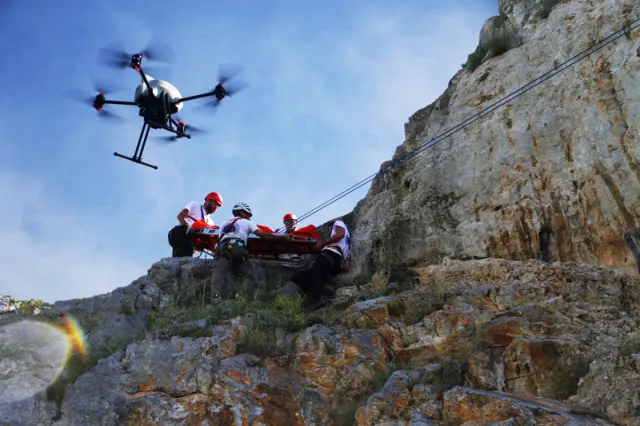By Mickey Miller, CEO, Vislink
A Long-Awaited Milestone
As someone who has worked at the intersection of advanced communications and uncrewed systems for years, I can say without hesitation: this is the moment we’ve been waiting for.
August 5, 2025, U.S. Transportation Secretary Sean P. Duffy announced the release of the FAA’s long-anticipated Notice of Proposed Rulemaking (NPRM) for Beyond Visual Line of Sight (BVLOS) drone operations. This new framework is set to remove the bottlenecks that have long hampered commercial drone use and will pave the way for widespread, routine BVLOS missions across the country.
You can find the full NPRM here, and the FAA’s fact sheet summarizing the key points here.
Why BVLOS Matters
Until now, the need to obtain waivers or exemptions for each BVLOS operation has slowed innovation and limited the practical use of drone technology. This new rule changes that. By establishing a framework for safe and scalable BVLOS flight, the FAA is enabling real growth and profitability in a wide variety of applications.
At Vislink, we’re supporting the uncrewed ecosystem with secure, high-performance communication solutions. From tactical defense to emergency services and live broadcast, we understand the critical role reliable connectivity plays in real-time operations. As BVLOS becomes more routine, we’re ready to support the growing demand for resilient, ultra-low-latency video and data links that help operators maintain situational awareness and mission success.

The Start of a New Chapter
This isn’t just a regulatory update – it’s the beginning of a new chapter for the U.S. drone industry. As the FAA Administrator said, this rule helps unlock “the full potential of BVLOS drone operations.” The NPRM provides a long-awaited, predictable pathway for operators, manufacturers, and service providers to collaborate and scale innovation safely. It offers a shared foundation for building a more connected, efficient, and resilient airspace.
Our team at Vislink has been diving into the more than 700 pages of the NPRM to better understand the full impact. A few early takeaways stand out:
- Company Responsibility, Not Pilot Certificates: Rather than individual pilot certificates, Part 108 would place the responsibility for ensuring pilot training and operational readiness on the operating company.
- Technology and Airspace Safety: Requirements include Detect-and-Avoid (DAA) systems, strategic de-confliction, and operations must occur at or below 400 feet above ground level from pre-approved, access-controlled launch sites.
- Automated Data Service Providers (ADSPs): The rule establishes a new Part 146 to govern Automated Data Service Providers, which will handle real-time traffic coordination, flight planning, and airspace integration. Operators may act as their own ADSP or use a certified third party.
- Carrier and Manufacturer Responsibilities: Rather than generic FAA limits, the rule emphasizes manufacturer-declared operating envelopes – defining limits on speed, altitude, environmental conditions, and payload capacity. Operators must ensure training, maintenance, and repairs align with those manufacturer specifications.
These are just a few of the changes that could redefine how – and where – drones operate.
Let’s Keep the Momentum Going
This is a pivotal moment, and I encourage everyone in our community to read the proposal and submit thoughtful comments. The FAA has opened a 60-day comment period, and now is the time to make your voice heard.